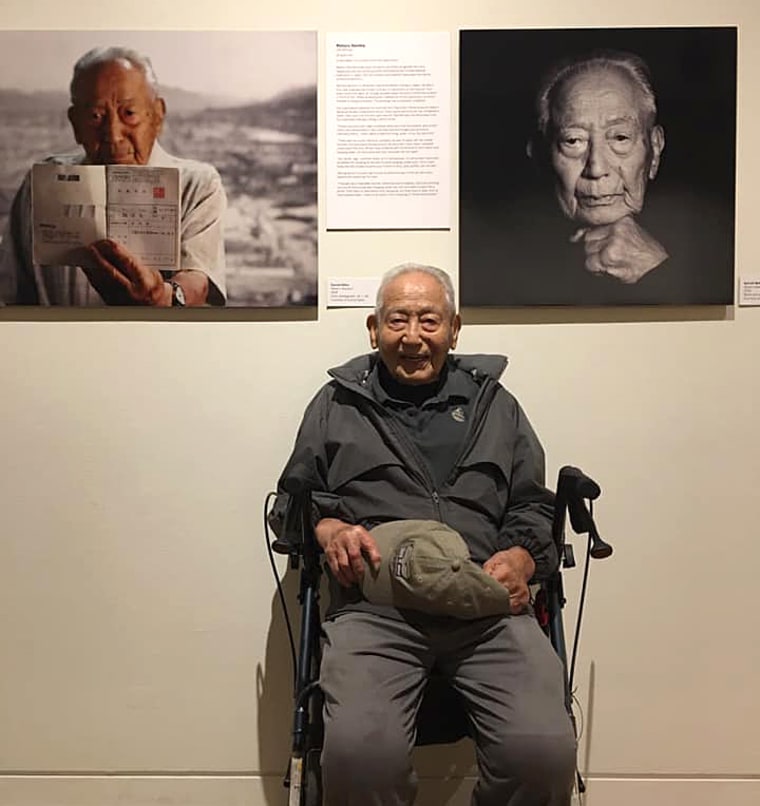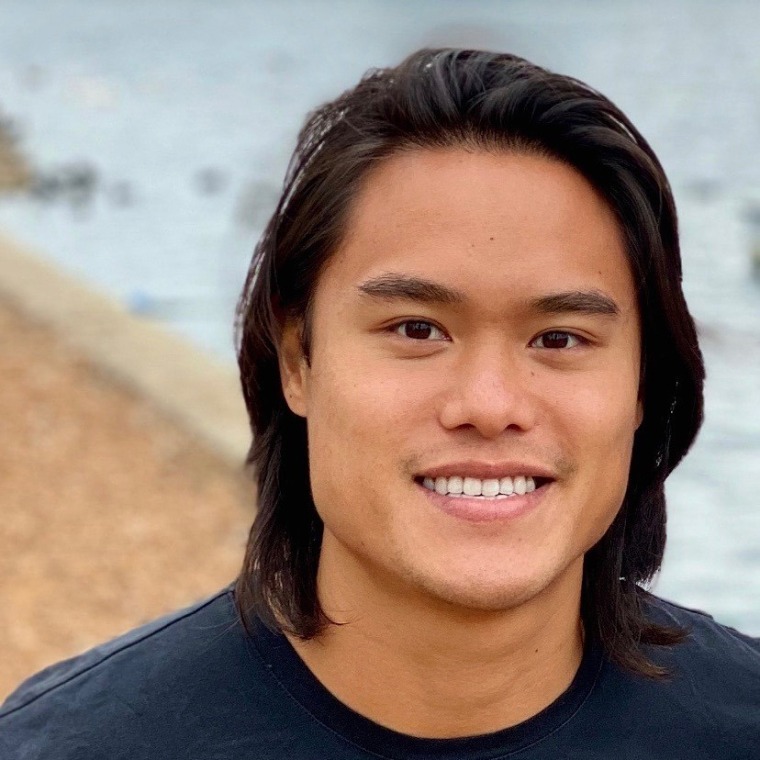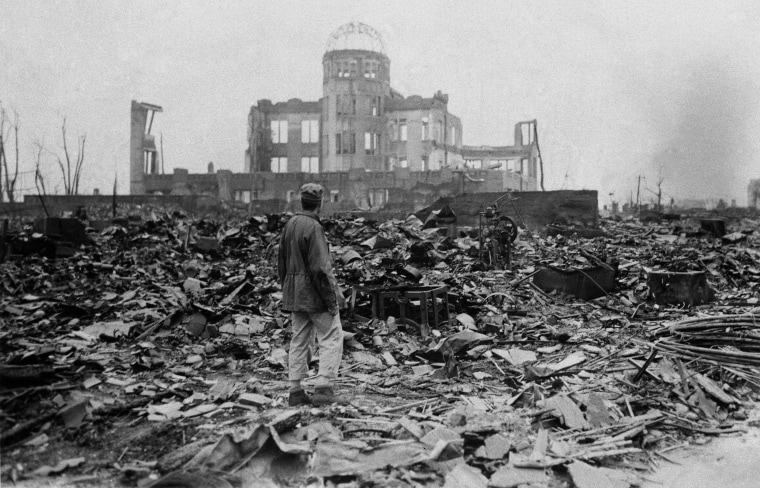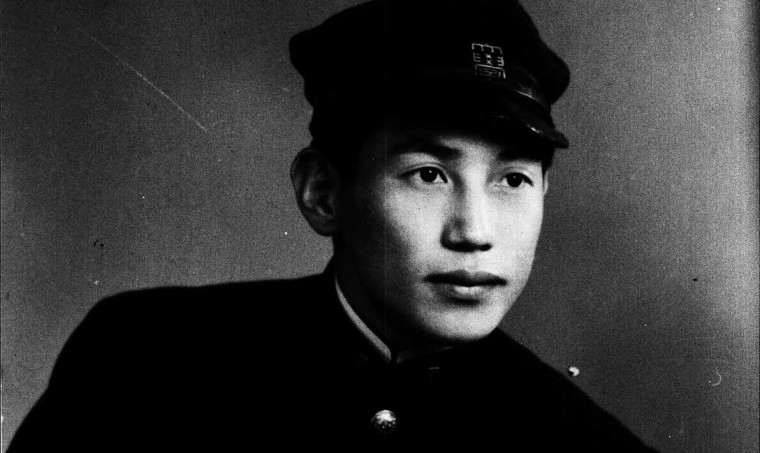On the morning of Aug. 6, 1945, Wataru Namba was in math class. Namba, a U.S. citizen, was 18 at the time, living with his grandparents in Hiroshima, Japan, and studying at a local college. That morning, just after 8 a.m., an American B-29 dropped an atomic bomb over the city. There was a blinding white light and an intense heat. Some of Namba's classmates perished in front of him.
His instinctual response was, simply, to run. Once he determined that bombing over Hiroshima would cease, he ran to his grandparents' house on the other side of the city.
"There was no emotion," Namba told NBC Asian America. "I was struggling to survive. That was the most important thing I was doing — how to survive this big, dangerous mess and try to get out from Hiroshima. ... I was just running and running all day."
Namba, who is 93 and lives outside Los Angeles, is among an estimated 3,000 Japanese American hibakusha, or survivors of the U.S. atomic bombs in Hiroshima and Nagasaki, Japan. While the exact death toll is unknown, the bombs are thought to have killed at least 200,000 people.

Now, on the 75th anniversary of the bombing, his grandson Jared Namba, 26, a documentary filmmaker based in Los Angeles, has released a short film called "An American Hibakusha" about his life to raise awareness of the Japanese American survivors who are often overlooked by histories of World War II. His aim was to document the physical and emotional turmoil that persists among people after having been bombed by your own country.
"Growing up, the Hiroshima atomic bomb was always portrayed in textbooks as something that happened to Japanese citizens and only Japanese citizens," said Jared Namba, who co-directed the film with Sazzy Gourley. "Meanwhile, the Japanese American World War II experience was framed only in terms of incarceration and internment camps. I always wondered, 'Where does my grandfather fit into this narrative?'"
He said his film highlights how U.S. military "successes" often include people of color as collateral damage, but they're hardly mentioned in any retelling. Through his lens, he wants to call attention to the omission of who gets to be considered American by raising questions such as: "Why has the U.S. government never recognized these American survivors? How do we reconcile my grandfather's tragic experience as a Japanese American with [President Harry] Truman's assertion that Hiroshima was a success for America? Who counts as American in his narrative? How much of our military's past and current involvements abroad are framed to us as a 'success' while hiding overlooked realities of those who are often Black and brown and have experienced its violence?"

Wataru Namba was born in the U.S. and moved to Hiroshima as a boy to live with his grandparents and his older brother. His younger siblings, who stayed behind in California, were among the 120,000 people of Japanese descent forced into concentration camps. Namba's family was held in Arkansas and at Tule Lake, California, often considered one of the worst of the 10 camps.
Meanwhile, Wataru Namba survived the bombing in Hiroshima but developed radiation sickness.
"He was practically bedridden for a few weeks," Jared Namba said. "He said that if a fly flew on his nose or his face he couldn't even muster the energy to swat it off."
Jared Namba, whose seven-minute film features present-day interviews with his grandfather, as well as archival footage from the National Archives and the Hiroshima Peace Memorial Museum, said the anniversary is particularly important, because it will be the last major milestone with a significant number of hibakusha still alive to tell their stories.
"Seventy-five years after the bombing, we are increasingly emotionally detached from the very real and tragic horrors that hibakusha experienced," he said. "I think it's so important to listen to hear and see these stories, not just read one line in a textbook."
Jared Namba said that for much of his life, his grandfather was reluctant to talk about the bombing, but that in recent years has started to be more forthcoming. Still, it's tough for him to discuss his feelings about what happened. But the emotion is there, Jared Namba said. During their interviews, his grandfather would occasionally ask to take breaks because he would feel physically hot recalling the events of that day 75 years ago.
Download the NBC News app for breaking news and alerts
Jared Namba said one of the reasons Japanese American hibakusha have been pushed out of the narrative is racism, both then and today. During World War II, people of Japanese descent were seen as the enemy, even if they were U.S. citizens, he said, and even today, Asian Americans are still often considered "perpetual foreigners." When President Barack Obama delivered a speech at the Hiroshima Peace Memorial in 2016, he mentioned American prisoners of war killed by the atomic bomb but not Japanese American victims, Namba said.
The U.S. government still hasn't recognized Japanese American hibakusha, even after it pledged reparations to Japanese Americans put in concentration camps.

For Jared Namba, the anniversary is also an opportunity to draw links between the hibakusha's movement for nuclear disarmament and this summer's protests for racial justice. For example, money spent on the U.S.'s military budget and nuclear arsenal, he said, is money that hasn't been spent on communities of color that have historically been under-resourced.
"It's important to have those conversations and connect the anti-nuclear movement to everything that's happening in our nation right now," said Namba, who also developed a resource guide to better understand the hibakusha experience and nuclear disarmament.
Wataru Namba said he hopes his story can help better educate the public about the perils of nuclear weapons.
"Average people don't think about it," he said. "But if people get this atomic bomb, it's a very dangerous thing to happen."
